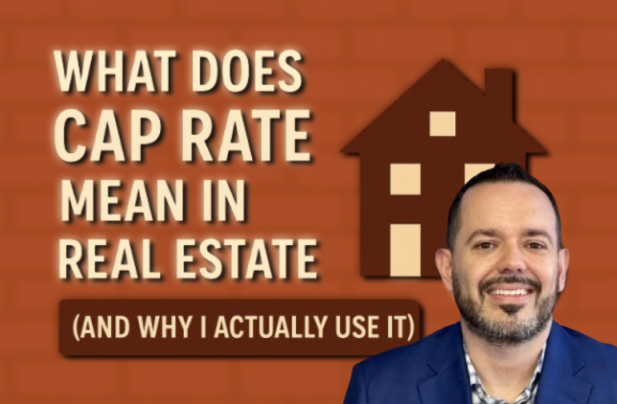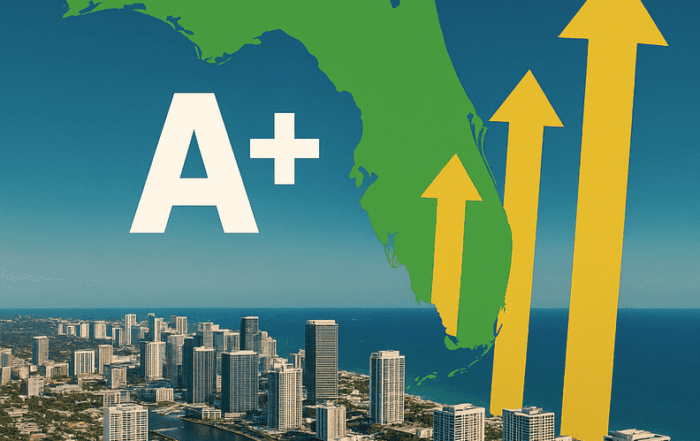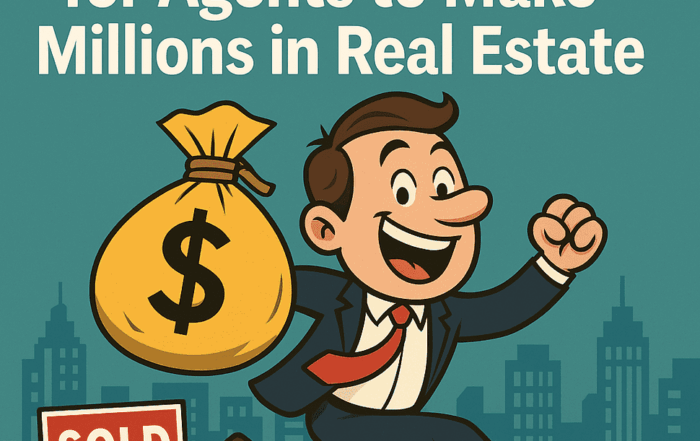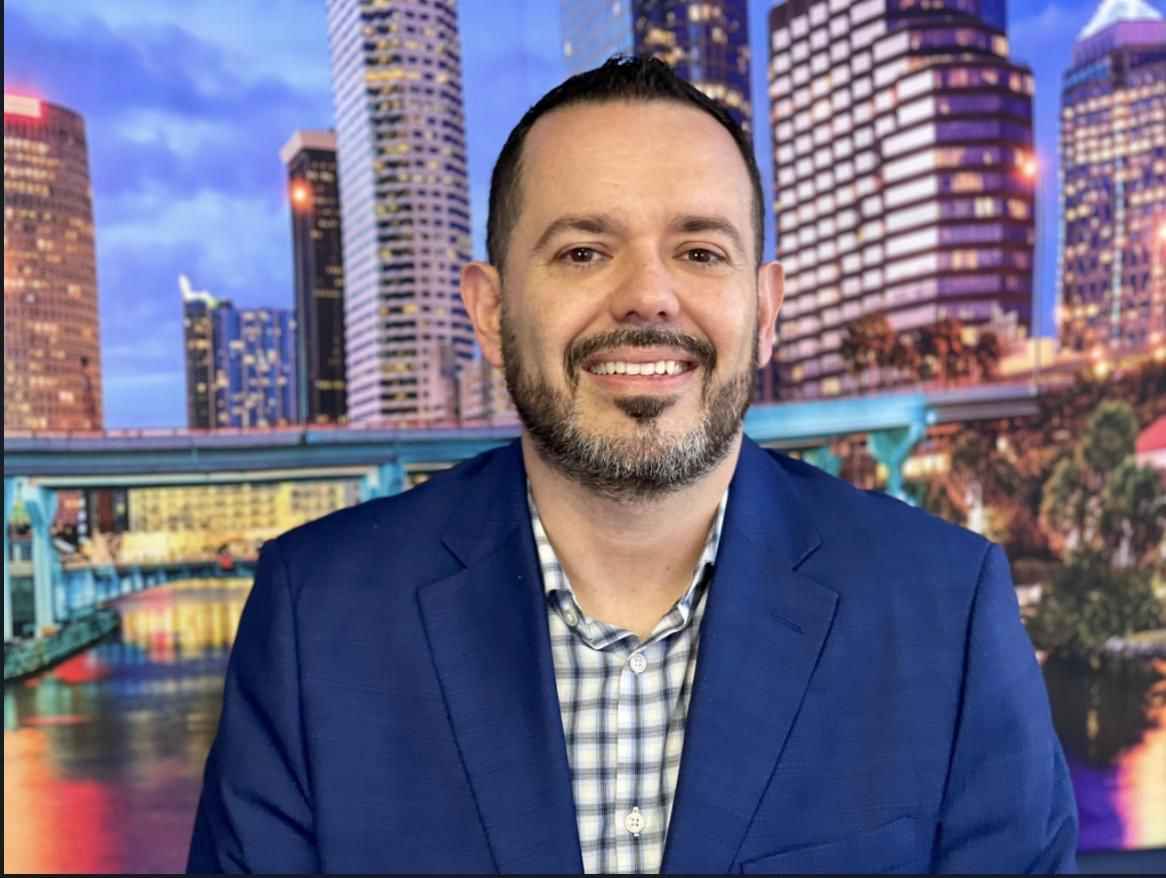
What Does Cap Rate Mean in Real Estate (And Why I Actually Use It)
Alright, I’m gonna break this down real easy—because I wish someone had done that for me when I started.
Cap rate. Sounds fancy, right? Like something a Wall Street guy in suspenders would yell across a trading floor. But really? It’s just a simple number that tells you if a rental deal might be worth your time. That’s it.
Cap rate (short for capitalization rate) is how we figure out what kind of return we’d get if we bought a property in all cash. Not using loans. Just straight-up money.
It’s a quick way to measure if a property is hustling hard enough to earn a spot in your portfolio.
The Cap Rate Formula (Don’t Worry, It’s Easy)
Here’s the basic math:
Cap Rate = Net Operating Income ÷ Purchase Price × 100
Let’s say:
-
You buy a rental for $200K
-
It brings in $24K in rent each year
-
You spend $8K on taxes, insurance, maintenance, and management
-
That leaves you with $16K in net operating income
So you plug it in:
$16,000 ÷ $200,000 = 0.08 → That’s an 8% cap rate
Now, if I bought that thing in cash, I’d be earning 8% a year on my money. Clean. No debt involved.
So… What’s a Good Cap Rate?
It depends where you’re investing and what your goals are, but here’s what I’ve seen over the years:
-
3% to 5%: That’s your Miami Beach, LA, or NYC stuff. You’re banking on appreciation, not cash flow.
-
6% to 8%: Solid middle ground. A lot of my properties land here. Good balance of cash flow and stability.
-
9% to 12% or more: That’s usually your higher-risk stuff. Might be in a rougher area, need more work, or just come with more headaches.
Now don’t go chasing a 14% cap rate on paper if the house is held together with duct tape and dreams. Always double-check the numbers.
Quick Warning: Cap Rate Doesn’t Count Your Mortgage
Cap rate is based on the idea that you’re buying the property in all cash.
But most of us use leverage, right? We get loans. So if you’re financing, cap rate is just the starting point. For the full picture, you gotta look at cash-on-cash return.
That metric takes your actual down payment, your loan, and your monthly payments into account. So while the cap rate might be 8%, you could be earning 15% on the actual cash you invested.
That’s why I always say: use cap rate to screen. Use cash-on-cash to decide.
Why I Still Use Cap Rate All the Time
I look at cap rate first because it gives me a fast, clean way to compare deals—whether it’s a duplex in Tampa, a short-term rental in Kissimmee, or a fourplex in Ocala.
Here’s what cap rate tells me right away:
-
Is this deal even worth a deeper look?
-
Am I overpaying based on the rents?
-
Can I make this deal work if I hold it long term?
It helps me move fast. Especially when I’m analyzing 5–10 deals a day.
Real Talk: My $43K Cap Rate Mistake
Let me be real. I once bought a property that had a “12% cap rate.” On paper, it was a slam dunk. In reality?
-
The tenant hadn’t paid rent in six months
-
The roof was from the Nixon administration
-
The property manager ghosted me like it was a bad date
What I actually got was more like a 2% cap rate, once I cleaned up the mess.
Lesson? Numbers lie when people fudge them. Always verify the rent roll, check the expenses yourself, and run your own math. Don’t rely on the seller’s brochure.
What Cap Rate Doesn’t Tell You
Cap rate’s helpful—but don’t get blind to everything else. It won’t tell you:
-
If the roof is shot
-
If the tenants are a nightmare
-
If the HOA has beef with landlords
-
If the area’s heading up—or going down
It’s one piece of the puzzle. I look at it early, but I never buy based on cap rate alone.
Quick Table: Cap Rate Ranges by Property Type
| Type of Property | Typical Cap Rate |
|---|---|
| Single-family rentals | 5–8% |
| Small multifamily | 6–10% |
| Commercial retail | 5–9% |
| Industrial/warehouse | 6–10% |
| Airbnb/STRs | All over the place |
Short-term rentals? One month you’re making $5K. The next month the city bans Airbnb. Be careful with those.
How I Use Cap Rate to Make Offers
Let’s say a seller wants $350K, and I know the property brings in $21,000 in NOI. That’s only a 6% cap rate. I want a 7% return.
I flip the formula:
$21,000 ÷ 0.07 = $300,000
That means I need to buy it at $300K to hit a 7% cap rate. Now I’ve got my counter-offer—and it’s backed by real numbers.
How Cap Rate Shifts Over Time
Don’t fall in love with a cap rate today if the future looks messy.
If property taxes go up, or rents drop, or the roof caves in… that cap rate will sink. I always stress-test my numbers. I ask, “If I lose $200 in rent or get hit with a $5K roof bill, can this deal survive?”
That’s how you avoid ugly surprises.
Cap Rate in Florida: What I See Every Day
Cap rates in Tampa, Orlando, Jacksonville—they’re all getting tighter. That’s because values are rising faster than rents.
So you might see a 5.5% or 6% cap rate on a solid property. But if it’s in a growing area and you’re playing the long game? Still worth it.
You’re trading a little cash flow now for big equity later. I’m cool with that—if the deal makes sense overall.
Wrap-Up: Cap Rate Is a Tool, Not a Religion
Don’t let anyone tell you “only buy at 10% cap rates” or “cap rate doesn’t matter.” Both are wrong.
Use it to screen deals fast. Use it to compare properties. Use it to negotiate. But don’t forget to zoom out.
Ask yourself:
-
Is this in a stable area?
-
Can I raise rents?
-
Can I improve management?
-
What’s the real risk?
And most importantly… Does it match your strategy? That’s what matters most.
One Last Thing…
I’ve seen people chase high cap rates and burn out. I’ve seen others take low cap rates and win big because they bought in the right area at the right time.
So yeah, learn the math. Respect the cap rate. But don’t forget—this game is about patience, consistency, and knowing what lane you’re in.
Keep it consistent, stay patient, stay true—if I did it, so can you. This is Jorge Vazquez, CEO of Graystone Investment Group and all our amazing companies, and Coach at Property Profit Academy. Thanks for tuning in—until the next article, take care and keep building!
If you’d like to connect directly with me, feel free to book a time here: https://graystoneig.com/ceo.
Pick your expert. Book your free 15-minute consult now. We are here to help!
Our Top Articles
Why You Should Sell Your Deals with Us
Let’s keep it real—wholesaling ain’t easy. You lock up a deal, hustle to find a [...]
Landlords, Listen Up: Florida’s A+ Economy Is Coming—Here’s Why 2025 Still Makes Sense
Florida’s A+ Economy in 2026: What This Means for Landlords, Renters, and Real Investors Like Me By Jorge Vazquez, [...]
What It Really Takes for Agents to Make Millions in Real Estate
What It Really Takes for Agents to Make Millions in Real Estate Inspired by a Fellow Featured Agent—Kat Palmiotti [...]
Property Profit Academy:
✔ Learn to buy properties with little to no money down.
✔ Build a $10M portfolio step by step.
✔ Master strategies like BRRRR and house hacking.








